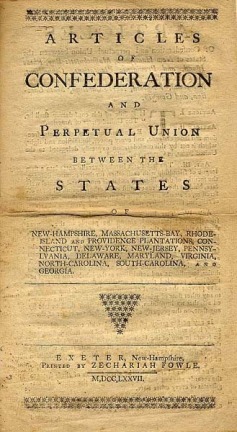A Dire Problem

The Articles of Confederation
After fighting a revolution against centralized governmental tyranny, the leaders of the Perpetual Union between the States wanted to organize a new government to hold together the recently independent nation that would be neither too centralized nor too oppressive. With this in mind, the continental congress created the Articles of Confederation.
The Articles of Confederation, ratified March 1st, 1781, were created in a time of war to organize thirteen independent states. The Articles of Confederation were no more than a set of unenforceable laws allowing for the states to have some sort of written bond in the coming time of peace. While they served the new nation well in a time of war, in peace they posed many issues.
By the end of 1786, the Confederation was close to dissolution. It was unclear whether such a union could survive much longer. The need for a new, more powerful federal government was clear. And on May 25, 1787, a group of delegates met to resolve this issue.
The Articles of Confederation, ratified March 1st, 1781, were created in a time of war to organize thirteen independent states. The Articles of Confederation were no more than a set of unenforceable laws allowing for the states to have some sort of written bond in the coming time of peace. While they served the new nation well in a time of war, in peace they posed many issues.
- The Confederation congress did not have the ability to tax. Because of this, they could not raise armies to defend the Confederation, pay for the protection of merchants on the high seas, or enforce the law.
- The lack of enforceability led disagreements between states and tension within the Confederation as a whole.
- Due to the inability of the Federal Government to tax, Daniel Shays rebellion against the Massachusetts state government could not be quelled with federal troops. It had to be put down by the state of Massachusetts.
- The laws surrounding the the Confederation Congress made it so it was almost impossible to reach the quorum that was needed to pass any national law. This caused almost total stagnation in the government.
By the end of 1786, the Confederation was close to dissolution. It was unclear whether such a union could survive much longer. The need for a new, more powerful federal government was clear. And on May 25, 1787, a group of delegates met to resolve this issue.
